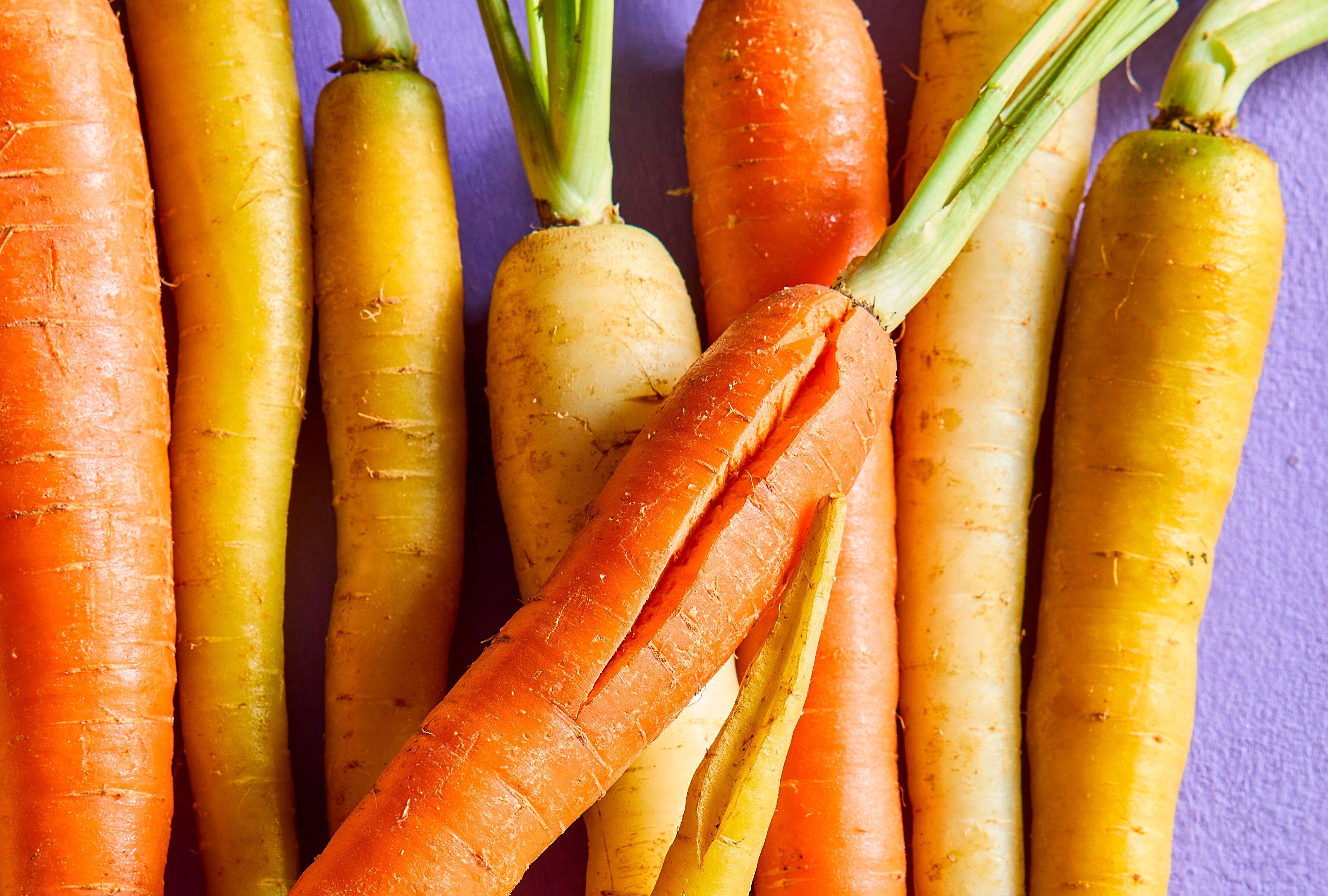Whether sliced into matchsticks and dipped into hummus, roasted to perfection, or shredded into an irresistible carrot cake, carrots are one of the most popular vegetables—and one of the most nutrient-dense, to boot.
“Carrots are rich in a wide variety of nutrients, but the three predominant ones are beta-carotene, fiber, and potassium,” says Crystal Higgins, R.D., registered dietitian and founder of The Flexitarian Dietitian. “Beta-carotene is an antioxidant (it converts to vitamin A) and is important for eye health, immune support, cholesterol management, and skin health. Fiber helps to regulate blood sugar, keeps us feeling full and supports gut health. Potassium is critical for blood pressure management and fluid balance. Overall, carrots are a budget-friendly, versatile, nutrient-dense, and widely available vegetable!”
But if you frequently stock up on carrots for salads, soups, and sides, you might have some questions. Should you pick thin or thick carrots? Can you eat carrot greens or baby carrots that have turned white? And what about split or cracked carrots? To answer the latter question, we turned to Higgins—read on to learn more.
Why Do Some Carrots Split or Crack?
Wondering why carrots split or crack in the first place? Higgins says that cracking—also known as growth cracks or splitting—typically occurs after a dry spell, followed by heavy rain or over-watering. “When there is an imbalance in moisture levels followed by a rapid intake of water, the carrot swells faster than its skin can stretch, resulting in vertical cracks or splits,” Higgins says.
Are Split or Cracked Carrots Safe to Eat?
If you notice some of your carrots have split or cracked, there’s no need for alarm. Higgins says that split or cracked carrots are generally safe to eat, as long as the cracks are not slimy, dark, or moldy. “Splits are an aesthetic issue and don’t affect the quality or nutritional value,” Higgins says. “However, the cracks can allow bacteria or fungi to enter more easily, so trim away any deeply cracked or discolored areas before eating.”
While you don’t always need to peel carrots before eating, you will want to make sure to cut off any split/cracked or discolored parts. Once the split area has been removed, Higgins says carrots can still be eaten raw, cooked, and blended into soups, stir-fries, and smoothies.
Try MyRecipes, our digital recipe box to stash and organize all your favorite Better Homes & Gardens recipes.
How to Store Carrots
While carrot tops are safe to eat, and delicious when made into pesto, you should remove them before storing to prevent moisture loss. “Carrots will become limp and rubbery left with the tops on,” Higgins says. She recommends storing whole, unpeeled carrots in the crisper drawer of your refrigerator, ideally in a sealed container or a produce bag. Once peeled or cut, carrots can be stored in a container with water to keep them crisp—just make sure to change the water every few days.
Signs of Spoilage in Carrots
While split carrots aren’t necessarily unsafe, there are some other signs of spoilage you should keep in mind. Higgins says to avoid any carrots showing these telltale signs of spoilage:
- Slimy or sticky
- Soft, mushy, or shriveled
- Dark spots
- Mold
- Sour smell



